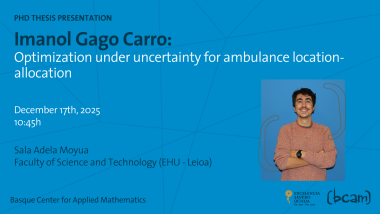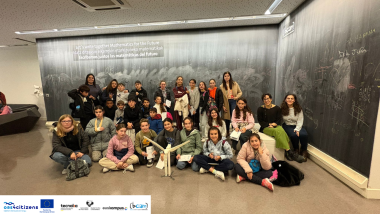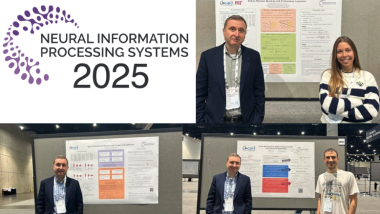Alejandra Hernández will defend his thesis on Monday, July 21st
The defence will take place at Sala Adela Moyua at the Faculty of Science and Technology of the EHU Leioa Campus at 11:00
María Alejandra Hernández Velandia has been a PhD student at the Basque Center for Applied Mathematics (BCAM) since October 2020, where she works within the Applied Statistics group. Her research focuses on the analysis of longitudinal data using semiparametric and nonparametric models, particularly by employing P-splines and mixed-effects models. Her objective is to enhance curve fitting and derivative estimation. The primary application of these methodologies is in studying human height growth during adolescence.
Hernández completed her BSc in Mathematics at the National University of Colombia in 2016, followed by an MSc in Statistics at the same university in 2018. Most recently, in 2020, she obtained her specialization in Actuarial Science from Antonio Nariño University.
Her thesis, titled “Novel P-Spline-based Approaches for Curve and Derivative Estimation in Longitudinal Growth Studies” is supervised by Dr. Dae-Jin Lee (IE University) and Dr. María Xosé Rodríguez Álvarez (Universidade de Vigo). It is scheduled to be defended on July 21st, 2025, at Sala Adela Moyua in the Faculty of Science and Technology, EHU Leioa Campus, at 11:00a.m.
On behalf of all members of BCAM, we would like to wish her all the best for the future, both professionally and personally.
Abstract
Longitudinal data analysis plays a key role in understanding individual development over time. It helps identify important characteristics such as growth patterns, biological variations, and key milestones like growth spurts and the age at which they occur. Although several statistical models and software implementations are available to estimate growth curves and their derivatives, challenges remain due to the complex and dynamic nature of these processes.
This dissertation explores a range of statistical methods for modeling growth based on repeated measurements from individuals. In particular, it highlights the use of penalized spline (P-spline) models, which have gained popularity for their flexibility in modeling smooth curves. Additionally, their connection with mixed-effects models allows us to take advantage of the methodological and computational tools in this setting for fitting P-spline models.
We focus on three main classes of models for fitting individual growth trajectories and estimating their derivatives: (i) the double-penalty P-spline model, (ii) a family of semiparametric mixed-effects models, and (iii) modified versions of the SuperImposition by Translation and Rotation (SITAR) model. Each approach is discussed in terms of its theoretical background, practical implementation, and suitability for growth analysis.
The proposed methods are evaluated through simulation studies and compared with alternative approaches to assess their performance. Our results indicate that the proposed models provide a slight improvement in curve fitting and derivative estimation. Additionally, we demonstrate the application of these methods using real longitudinal data from 125 young professional football players to analyze their growth and maturation processes over time.
Related news
BCAM people
Former BCAM PhD Student Peter Angerman Wins British Society of Rheology Vernon Harrison Award
Women in Science




